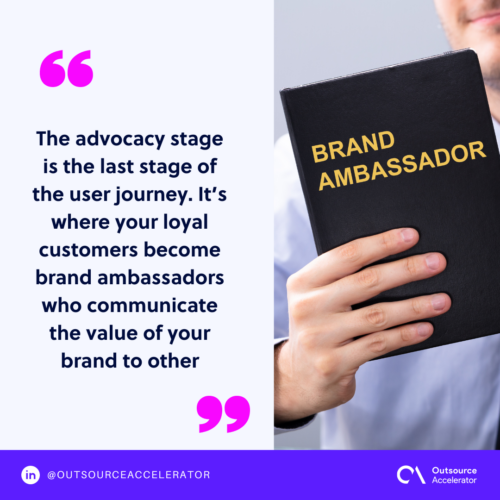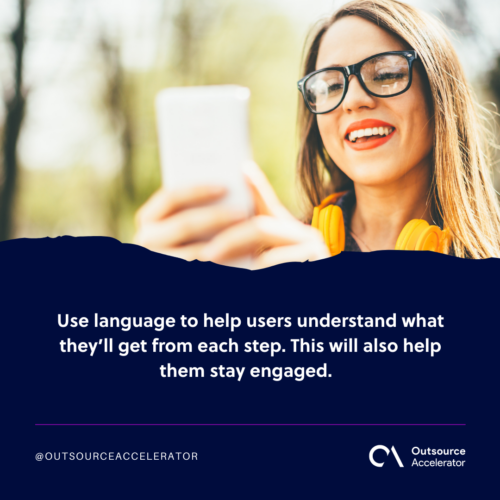Optimizing experiences through user journey mapping

A user journey encompasses every step a user takes, from initial awareness to final conversion and beyond.
By delving into the intricacies of the user journey, we unlock invaluable insights that can transform how we design websites, craft user experiences, and ultimately drive conversions.
In this article, we will explore the importance of user journey mapping, the key stages involved, and actionable strategies to optimize each step of the journey.
What is a user journey map?
A user journey map is a tool that outlines the path that users take with your product. The user journey follows them from their first interaction all the way to their last.
User journey maps aim to understand how users interact with your brand. Their behavior will then help you make informed decisions about improving their customer experience.
User journey maps are particularly helpful for UX designers when creating visual representations of the steps users take to complete a task. It helps them develop an interface that meets needs and makes the task easier.
User journey maps are also known as:
- Customer journey maps
- Customer experience maps
- Customer flow diagrams
- Customer lifecycle maps

Stages of the user journey
The user journey can be broken down into distinct stages, each playing a role in shaping the overall user experience. These stages serve as the main checkpoints of your user journey map.
The main stages of the user journey are:
Awareness
Awareness is the first stage of the user journey, representing the first contact someone makes with your product or service. Your goal in this stage is to get as many people as possible to contact your brand.
People may seek your product when they become aware of a problem or need. If you can address this issue, you can start them on the user journey.
Consideration
The consideration stage of the user journey is when interested users begin to reveal themselves and look for details about your product. They’re trying to decide whether they should purchase or not.
The user may be researching information about your company online, reading reviews, and looking for other opinions.
When mapping the user journey, it’s important to ensure potential customers can easily find all the information they need. Present it in a clear way that helps them understand what makes it unique.
Conversion
Conversion is the point of the user journey where they’ve taken the action you want them to take.
It’s important to measure conversion and understand how users are converting. The goal of any marketing campaign is to increase sales or leads, so you must figure out what works and what doesn’t so you can optimize campaigns accordingly.
Conversion is the ultimate goal of your website. As part of user journey mapping, it’s important to keep this in mind when you design your site.
Onboarding
The onboarding process may be the most important stage of the user journey.
It’s the first impression that a user gets in actually using your product. It’s essential that this stage is as smooth and intuitive as possible.
First impressions are important, so make sure you’re doing everything you can to make the user’s first experience with your brand positive. This could mean offering helpful tutorials and guides or even sending them useful tips on how to get the most out of their product.
The goal of any onboarding experience is to get new users started with your product as quickly and efficiently as possible.
Engagement
Engagement is the user journey stage where people actively use your product.
Once users have made their purchase and been onboarded, they’ll gradually begin using your product more often until they become proficient with it and it becomes part of a routine. This is the best time to collect feedback about their experiences.
The main goal of the engagement stage is to turn new visitors into active, repeat users.
Advocacy
The advocacy stage is the last stage of the user journey. It’s where your loyal customers become brand ambassadors who communicate the value of your brand to others.
Your role is to help these advocates and encourage them to share their positive experiences of your product with others.
One way to do this is to create an ambassador program that rewards users who promote your product through social media or send referrals to new customers.

How to create a user journey map
Your company’s specific user journey map will largely depend on your industry and the services you offer. Still, it’s worth remembering these broad guidelines when assembling your user journey map.
Define your scope
The first step is to define the scope of your user journey map. This will help you focus on the most critical aspects of their journey and avoid getting distracted by irrelevant details.
Ask yourself the following questions:
- What are you trying to learn?
- What do you want to improve?
- What do you need from the user journey map?
Conduct persona research
Personas are fictional, generalized representations of target users. This concept helps you create better products for your user journey by defining your target audience and their needs.
Personas are typically created through research and interviews with real people in your user base. Organizations also create them based on existing data from surveys or other sources.
Once you have identified the most important personas, create a profile for each one so that your team understands who these people are and what matters to them.
Set customer touchpoints
Customer touchpoints are places where users interact with your brand or product.
For an online business, a good place to start is by thinking about your overall business goals and identifying the key landing pages that would help you achieve them.
When creating a user journey map, take note of some other touchpoints, including:
- Mobile app downloads
- Online purchases
- In-store purchases
- Social media interactions
Map future states
A user journey map shouldn’t just focus on a single version of the user journey. You should consider what might happen in the future and how a user might get there.
Users don’t just take one path. There are multiple options for accomplishing a task or leading to conversion. Think about all possible scenarios as you map out your user’s journey.
As you map out possible future states, you can use these as a guide for developing new product features or redesigning existing ones.
Refine
Once you’ve created the first draft of your user journey map, it’s time to refine it.
Here are some ways to improve your map:
- Improvise your user experience research. Go back and continue collecting data.
- Add more detail. Make sure your user journey map accounts for specific paths while still remaining flexible.
- Communicate benefits. Use language to help users understand what they’ll get from each step. This will also help them stay engaged.

Why do you need user journey mapping?
User journey mapping is a crucial part of the product development process. It helps you to understand what your customers go through and what they’re looking for when they use your product.
A user journey map is one of the most effective ways to communicate, analyze and prioritize your product roadmap with stakeholders across your organization. Here are some of the benefits:
- You can clearly define goals and objectives for each stage of the customer journey.
- It helps identify problems along the way so you can fix them before they turn into crises.
- It helps prioritize features based on real-world data rather than assumptions or speculation.
Visualizing the user journey empowers businesses to gain a deep understanding of their users and create remarkable experiences.







 Independent
Independent




